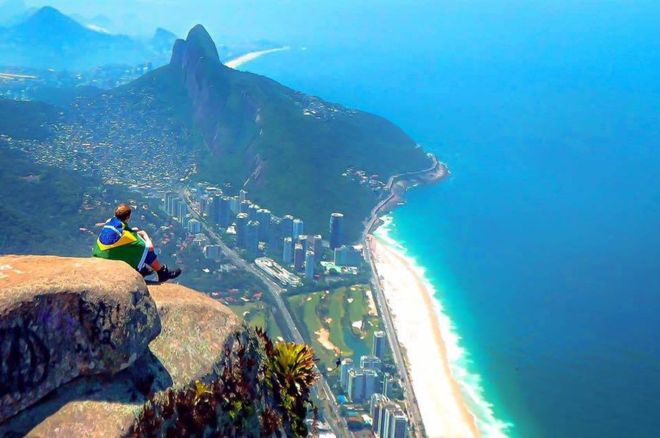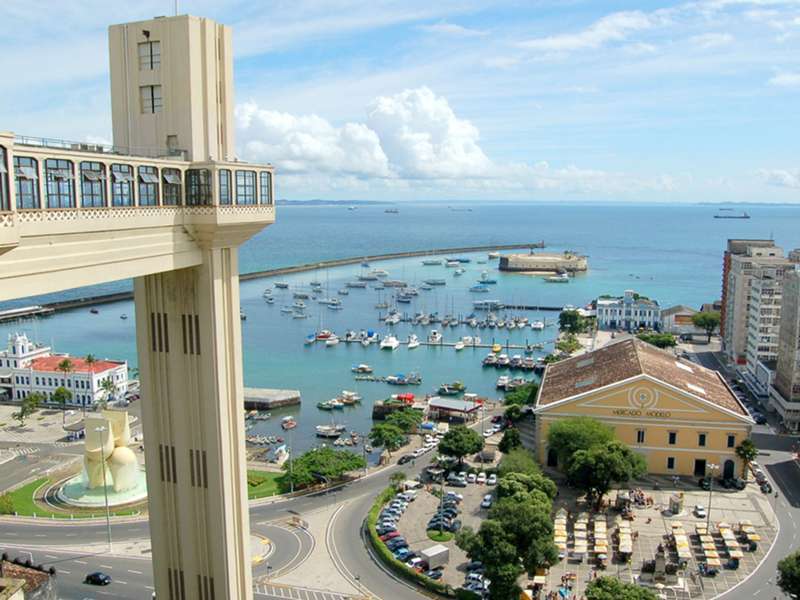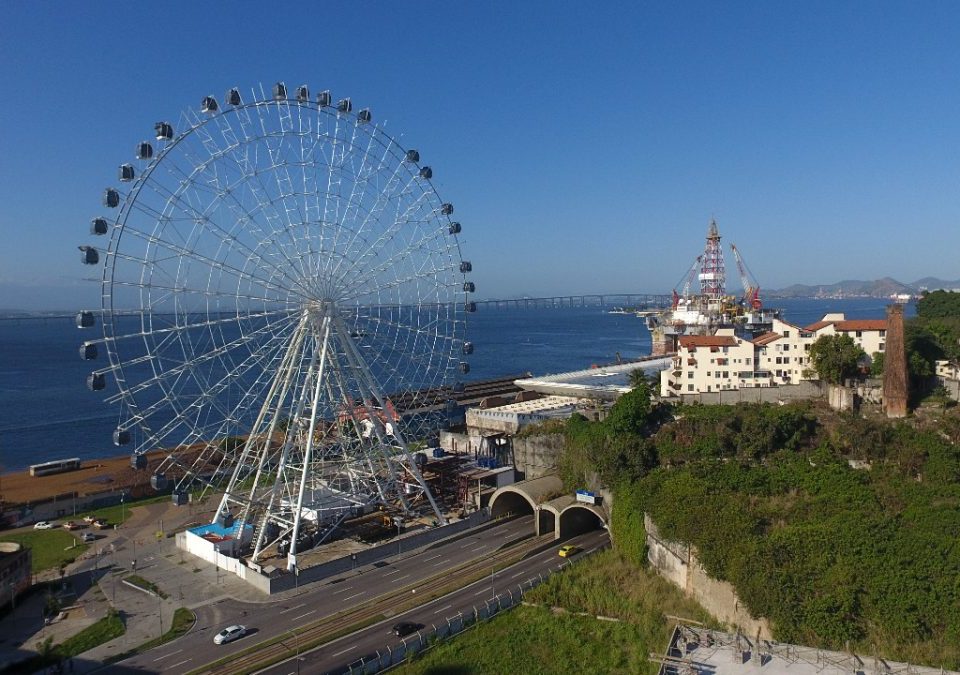The largest country in South America, Brazil occupies almost half the continent. Nearly all of it is in the Southern Hemisphere and much of it is tropical, with vast stretches of rainforest filled with exotic plants and wildlife. Its 7,400-kilometer Atlantic coast is lined with golden sand beaches, and its interior is filled with mineral resources. Gold from Brazil’s mines still lines the churches of Portugal, the colonial power that ruled Brazil until 1822. This strong Portuguese influence is evident in Brazil’s colonial architecture, in decorative arts such as the glazed tiles in its churches and convents, and in the language. For tourists, Brazil is both a tropical paradise and an exciting cultural destination with attractions for all tastes, from idyllic beach holidays and jungle explorations to world-class art museums and the pulsing rhythms of Rio’s Carnival.
1 Sugar Loaf, Rio de Janeiro
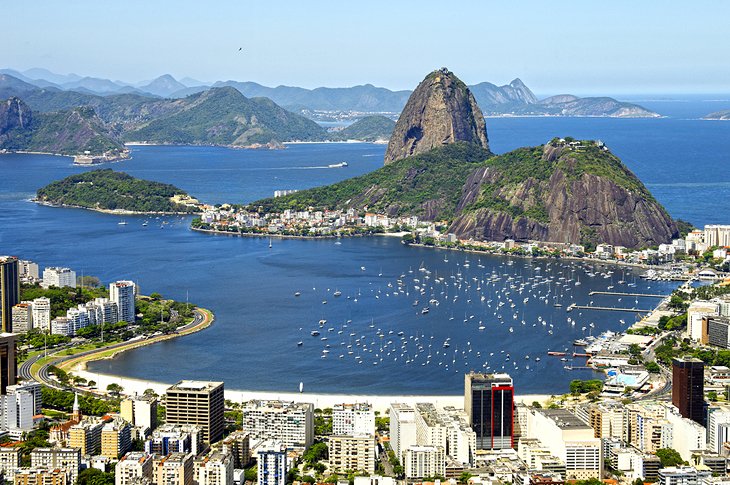
Sugar Loaf, Rio de JaneiroShare:
The easily recognized emblem of Rio de Janeiro, the rounded rock peak of Sugar Loaf juts out of a tree-covered promontory, rising 394 meters above the beaches and city. Its summit is one of the first places tourists go, for views of Rio and the harbor, and for the thrill of riding suspended in a cable car between Sugar Loaf and the Morro da Urca, a lower peak from which a second cableway connects to the city. Rio’s first settlement began below these peaks, near the long Praia da Urca beach, and you can tour one of the three early forts there, the star-shaped Fort São João.
2 Cristo Redentor, Rio de Janeiro
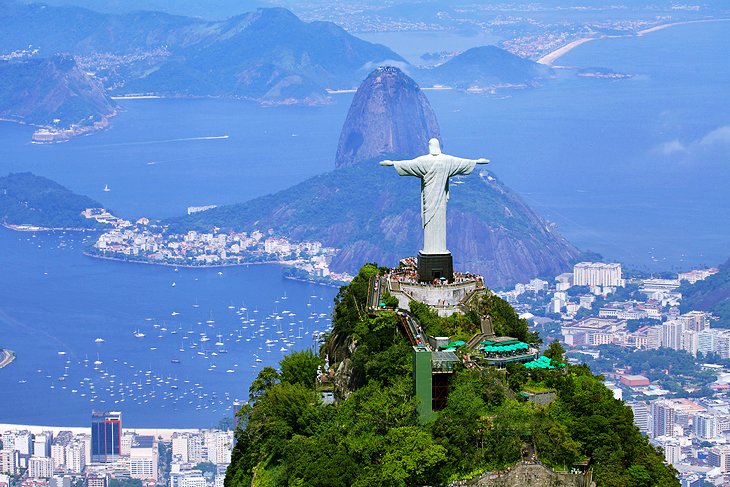
Cristo Redentor, Rio de JaneiroShare:
With arms outstretched 28 meters, as if to encompass all of humanity, the colossal Art Deco statue of Christ, called Cristo Redentor (Christ the Redeemer), gazes out over Rio de Janeiro and the bay from the summit of Corcovado. The 709-meter height on which it stands is part of the Tijuca National Park, and a rack railway climbs 3.5 kilometers to its top, where a broad plaza surrounds the statue. Completed in 1931, the 30-meter statue was the work of Polish-French sculptor Paul Landowski and Brazilian engineer Heitor da Silva Costa, and is constructed of reinforced concrete and soapstone. The eight-meter base encloses a chapel that is popular for weddings. Although this is one of Brazil’s most readily recognized icons, it is often mistakenly called The Christ of the Andes, confused with the older statue marking the boundary between Argentina and Chile.
A mid-point stop on the railway leads to trails through the Tijuca National Park, a huge forest that protects springs, waterfalls, and a wide variety of tropical birds, butterflies, and plants. Several more viewpoints open out within the park.
3 Carnaval, Rio de Janeiro
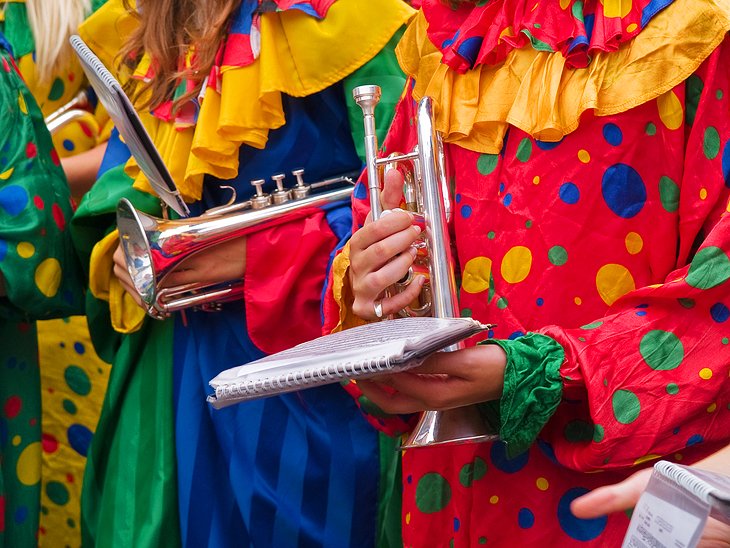
Carnaval, Rio de JaneiroShare:
Few shows match Rio’s pre-Lenten Carnaval (Carnival) extravaganza for color, sound, action, and exuberance. Make no mistake, this is not just another rowdy street party, but a carefully staged showpiece, where spectators can watch the parades of competing samba dancers from a purpose-built stadium designed by none other than Brazil’s best-known architect, Oscar Niemeyer. Called the Sambódromo, this long series of grandstand boxes provides ringside seats to a 700-meter parade route where dancers and musicians from the competing samba schools strut their stuff in a dazzling explosion of brilliant costumes. If mob scenes are less appealing to you than more spontaneous celebrations (that are equally riotous and colorful), you’ll also find Carnivals in Salvador, Bahia, Recife, and other Brazilian cities.
4 Iguaçu Falls
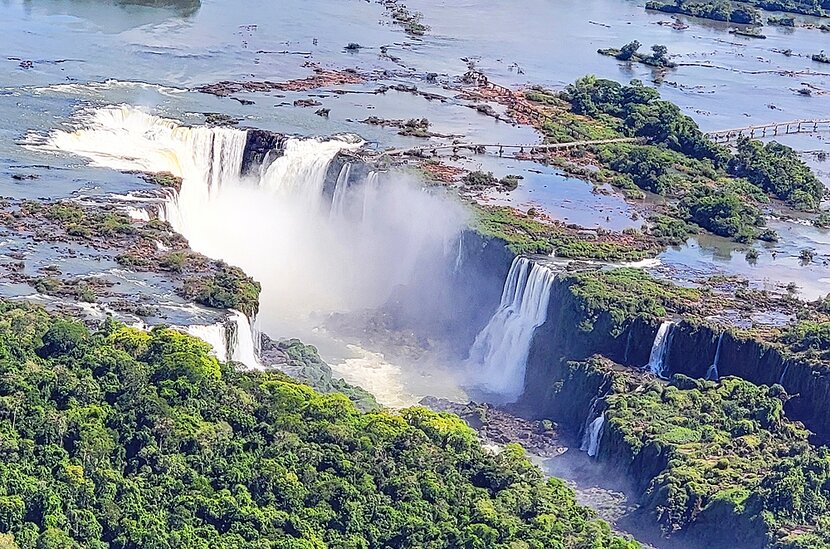
At the point where Brazil, Paraguay, and Argentina meet, the Iguaçu river drops spectacularly in a semicircle of 247 waterfalls that thunder down into the gorge below. Just above the falls, the river is constricted to one-fourth of its usual width, making the force of the water even stronger. Some of the falls are more than 100 meters high and they cover such a broad area that you’ll never see all of them at once, but you do get the broadest panorama from the Brazilian side. Catwalks and a tower give you different perspectives, and one bridge reaches all the way to one of the largest, known as the Garganta do Diabo (Devil’s Throat). You can cross to the Argentinian side for closer views from catwalks that extend farther into the center of the falls. The two sides offer different perspectives and views, so most tourists plan to see both. The falls are protected by the UNESCO-acclaimed Iguaçu National Park, where subtropical rain forests are the home to more than 1,000 species of birds and mammals, including deer, otters, ocelots, and capybaras.
5 Copacabana, Rio de Janeiro
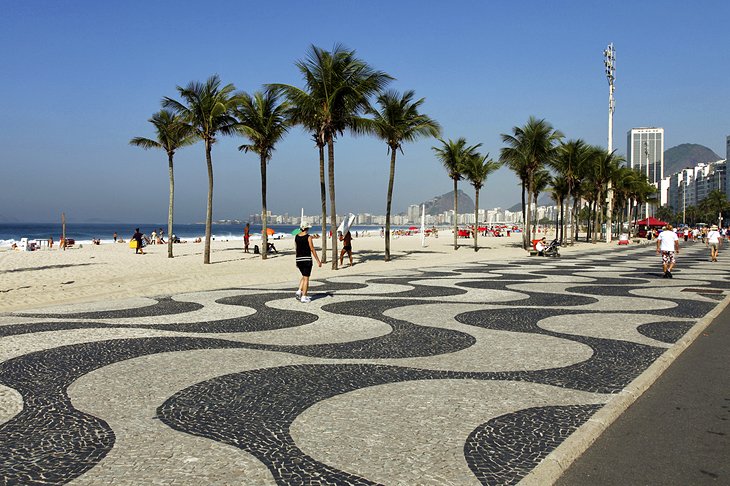
Copacabana, Rio de JaneiroShare:
Downtown Rio’s most fashionable and famous section follows Avenida Nossa Senhora de Copacabana and is bordered all along one side by four kilometers of white sand and breaking surf. The beach is separated from the buildings and traffic by a broad promenade paved in black and white mosaic in an undulating pattern reminiscent of streets in Lisbon, Portugal. The beach isn’t just for show. It’s also a popular playground filled with sun-worshipers, swimmers, and kids building sand castles whenever the weather is fine. Stroll the streets here to find restaurants, smart shops, cafés, and beautiful old buildings from the days when Rio was Brazil’s capital. One of these, the famed Copacabana Palace, is protected as a national monument. Inside its lobby, you can easily imagine seeing the royalty and film idols who have stayed here.
6 Amazon Rain Forests
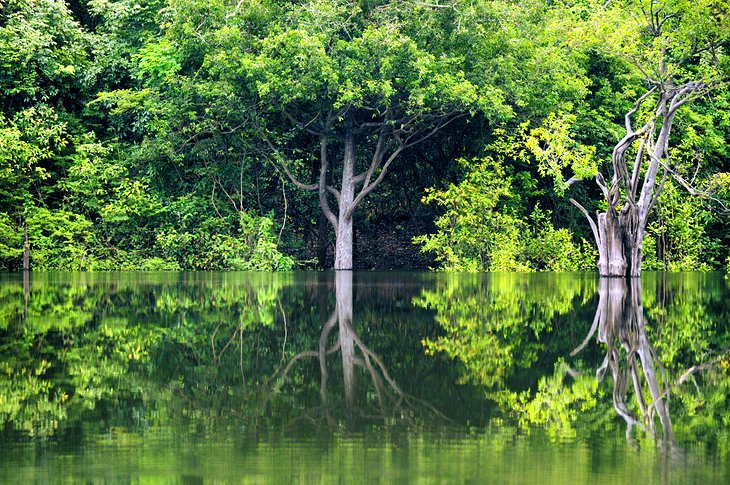
About 20 kilometers southeast of Manaus, the dark Rio Negro waters meet the light muddy water of the Rio Solimões, flowing side by side for about six kilometers before mixing as the Amazon. Boat trips from Manaus take you to this point, called Encontro das Aguas, meeting of the waters. Other boat trips take you into the heart of the rain forests and the network of rivers, channels, and lakes formed by the three rivers. In the Rio Negro, the Anavilhanas Islands form an archipelago with lakes, streams, and flooded forests that offer a full cross-section of the Amazonian ecosystem. You can see monkeys, sloths, parrots, toucans, caimans, turtles, and other wildlife on a boat trip here. Also close to Manaus, the 688-hectare Janauari Ecological Park has a number of different ecosystems that you can explore by boat along its narrow waterways. An entire lake here is covered with giant water-lilies found only in the Amazon region. While in Manaus, be sure to see its famous Teatro Amazonas, the Italian Renaissance-style opera house, designed to put Manaus on the map as South America’s great center of culture.
7 Brasília’s Modernist Architecture
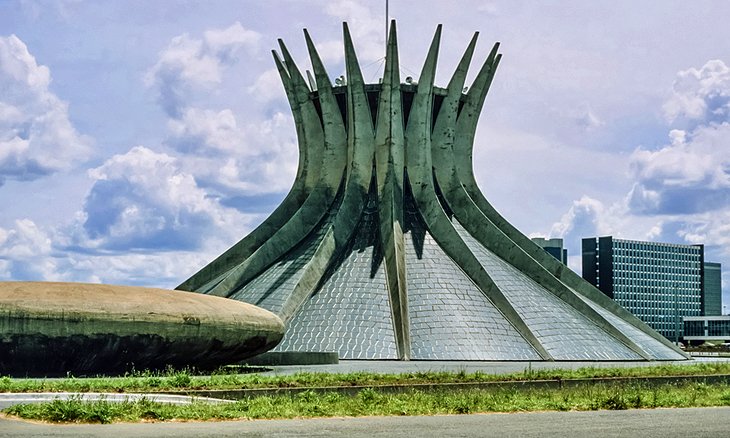
Brasília’s Modernist ArchitectureShare:
Brazil’s new city of Brasília was carved out of the wilderness and completed in less than three years to replace Rio de Janeiro as the country’s capital in 1960. The ambitious plan by Lúcio Costa and Oscar Niemeyer became a showpiece of city planning and avant-garde architecture, and it remains today as one of the world’s few cities that represent a completed plan and a single architectural concept. Without the normal mix of residential and business districts, the entire governmental section is composed of major architectural highlights, which are the city’s main tourist attractions. Some of the most striking surround Praça dos Tràs Poderes: the presidential palace, supreme court, and the two sharply contrasting congress buildings, plus the Historical Museum of Brasília and the Panteão da Liberdade (Pantheon of Freedom), designed by Oscar Niemeyer. That architect’s best-known building in the city is the circular Catedral Metropolitana Nossa Senhora Aparecida, whose curved concrete columns rise to support a glass roof. Another of Niemeyer’s landmark works is the Palácio dos Arcos, surrounded by beautiful gardens designed by Brazilian landscape architect Roberto Burle Marx, who worked with Niemeyer on several projects throughout Brazil. The round Memorial dos Povos Indígenas (Museum of Indigenous People) is patterned after a traditional Yąnomamö round house. But many consider Niemeyer’s finest work to be the Monumento JK, a memorial to President Juscelino Kubitschek, the founder of Brasilia. Brasilia has been named a UNESCO World Heritage city.
8 Salvador’s Pelourinho
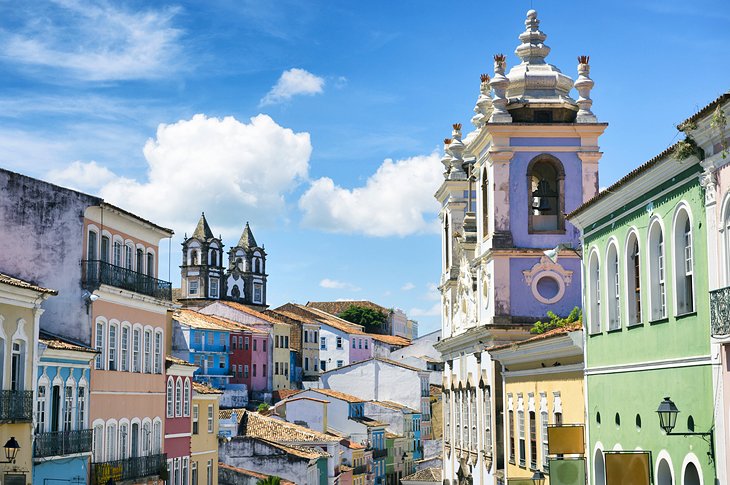
The Cidade Alta (Upper Town) of Brazil’s former colonial capital has been named a UNESCO World Heritage site for its exceptional collection of 17th- and 18th-century colonial buildings, the finest such ensemble in South America. Called the Pelourinho, this old quarter is where you’ll find Salvador’s most beautiful churches and monasteries, built at a time when Brazil was the source of Portugal’s riches, and the plentiful gold was lavished on the colony’s religious buildings. The finest and most opulent of the city’s churches is São Francisco, built in the early 1700s and filled with intricate carvings covered in gold. In the choir and cloister, you can see excellent examples of Portuguese tile panels, called azulejos. This was the friary church, and next to it is the church of the Franciscan Third Order. It’s impossible to miss the riotously carved façade covered in statues and intricate decoration. The interior is just as ornate, surpassing even the Portuguese Baroque in its opulent detail.
9 Ouro Preto
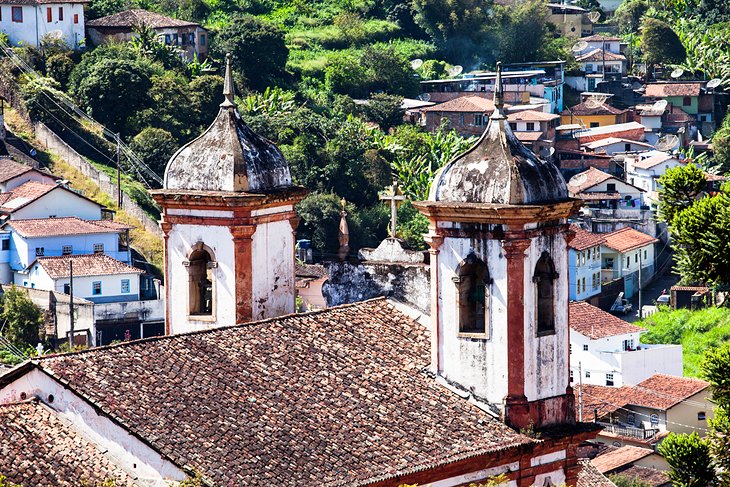
The wealth of Brazil’s state of Minas Gerais in its glory days of the colonial period is easy to imagine from the interiors of the churches in its old capital, Ouro Preto. Entire walls are washed in gold that flowed – along with diamonds – from the mines surrounding the city in the 17th and 18th centuries. Cascading down the sides of a steep valley and surrounded by mountains, Ouro Preto is a jewel of a colonial town, but its steep narrow streets and mountain setting – however captivating for tourists today – didn’t meet the needs of a growing provincial capital. The government moved to the newly built capital of Belo Horizonte, leaving Ouro Preto in its time capsule. The 17th-century Baroque and Rococo churches of São Francisco de Assis and Matriz de Nossa Senhora do Pilar are the best examples, but the entire town is so rich in colonial architecture that Ouro Preto has been named a UNESCO World Heritage Site. The steep streets, so precipitous in places that they become stairways, are lined by gracious colonial mansions, and white churches crown its hills with Baroque bell towers.
10 Pernambuco Beaches
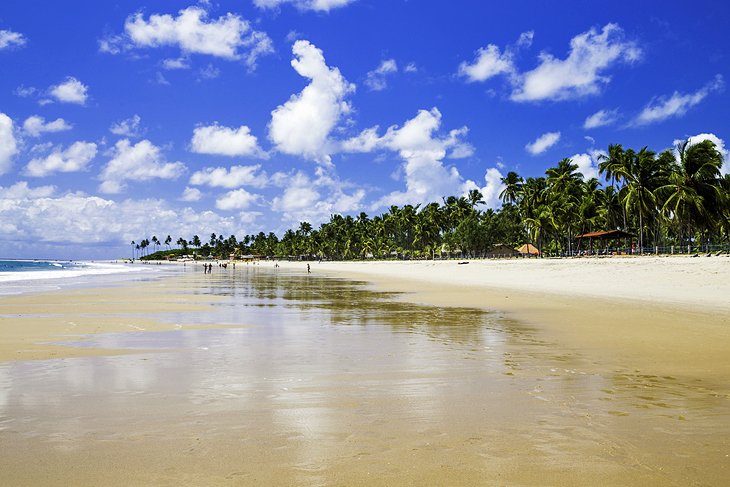
The crystal waters, tall palm trees, and broad stretches of silver sand are only a few of the reasons why Porto de Galinhas is frequently cited as Brazil’s best beach. For a country with more than 7,000 kilometers of Atlantic coast, much of it sandy beaches, that’s saying a lot. The town stretching along the beach is laidback, colorful, and just the right blend of old-fashioned beach town fun and chic boutiques. Its hotels and resorts lie close to the land instead of soaring in high-rise blocks. Jangadas, picturesque sailboats, will take you out to reef-top pools where brilliant tropical fish swim around your feet in ankle-deep water. You can also take a boat to a lagoon where tiny seahorses swim, and you can scuba dive to explore impressive coral reefs or shipwrecks, kayak in the lagoons and estuary, or buy a fanciful kite from a beach kiosk to fly in the steady breeze. Nearby Maracaipe is popular with surfers.
Porto de Galinhas is just one of the beautiful beaches on Pernambuco’s 187-kilometer coast. Closer to Recife, 17th-century Olinda is a UNESCO World Heritage Site overlooking a popular beach. The main beaches in Recife itself are Praia da Boa Viagem, São José da Coroa Grande, and the Carne De Vaca. Brazil’s other top beaches are
11 Belo Horizonte
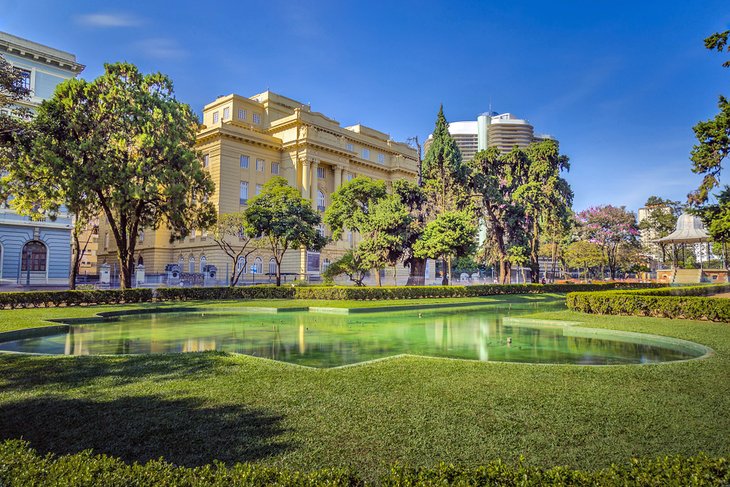
The capital of the state of Minas Gerais gave the pre-eminent Brazilian architect Oscar Niemeyer his first commissions, and today, these early Niemeyer buildings draw tourists and fans of Modernist architecture to the city. His first major work, which immediately set him apart from conventional architects, was the parabolic-curved São Francisco de Assis church, beside a lake in the Pampulha neighborhood. On the hillside above it, and connected by gardens designed by landscape architect Roberto Burle Marx, is Niemeyer’s earlier casino building, now an art museum. Overlooking the large Praça da Liberdade in the city center is the sinuous apartment building, Edificio Niemeyer, one of his most famous early works. The clean geometric lines of his later Palácio das Artes mark the edge of the Municipal Park, housing the Minas Gerais Craft Center featuring works of contemporary craftsmen. The Postmodern Rainha da Sucata – Queen of Scrap Iron – is another landmark building in Belo Horizonte, this one the work of Éolo Maia and Sylvio Podestá. It now houses the mineralogy museum.
12 Art Museums of Sao Paulo
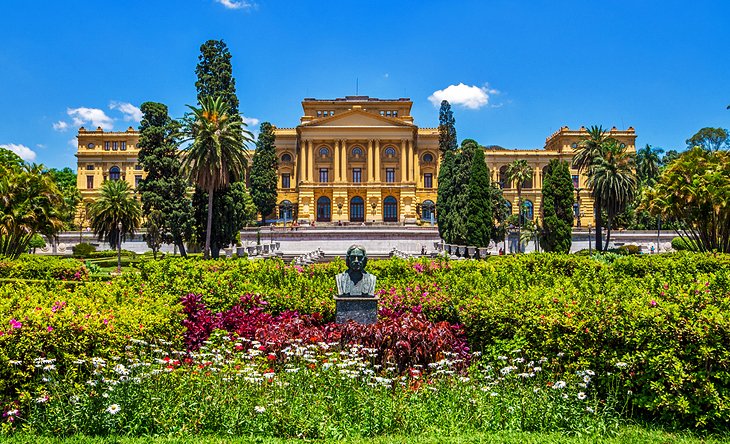
Art Museums of Sao PauloShare:
São Paulo holds some of the best collections of fine arts in Latin America, and the buildings in which they are housed are architectural landmarks as well. The Museu de Arte, MASP, displays the continent’s most comprehensive collection of western art, with representative works by artists from the Renaissance through modern masters. There are 73 bronze sculptures by Degas and works by Renoir, Manet, Van Gogh, Matisse, Picasso, and Miró. From its beginning, the museum has concentrated on works of mid- to late-20th-century artists, and the building designed by architect Lina Bo Bardi is a Modernist landmark. Oscar Niemeyer designed the Pavilhão da Bienal de Artes in Ibirapuera Park, home to the Museu de Arte Contemporânea. More than 8,000 works of art – one of Latin America’s largest collections of 20th- century Western artists – includes Picasso, Chagall, Kandinsky, Miró, and Modigliani along with major Brazilian painters. Set above Versailles-inspired formal gardens, Museu do Ipirangahouses paintings and decorative arts.
Source:
https://www.planetware.com

